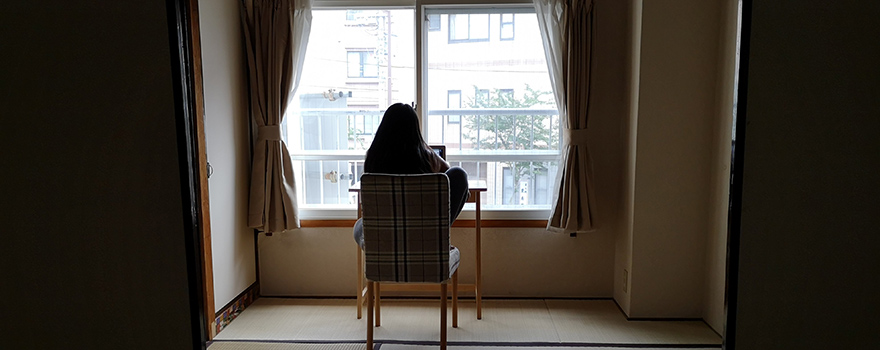“Our original guiding stars are struggle and hope. But there is no such thing as a lone struggle, no such thing as a lone hope. In every human being are combined the most distant epochs, passivity, mistakes, sufferings, the pressing urgencies of our own time, the pace of history.” – Pablo Neruda in his Nobel Lecture



Tag: insight
“…not till we are completely lost, or turned round – for a man needs only to be turned round once with his eyes shut in this world to be lost – do we appreciate the vastness and strangeness of nature. Every man has to learn the points of compass again as often as be awakes, whether from sleep or any abstraction. Not till we are lost, in other words not till we have lost the world, do we begin to find ourselves, and realize where we are and the infinite extent of our relations.” – Henry David Thoreau, Walden
According to Catholic tradition, the devotion of the “Via Crucis” or “The Way of the Cross” honors the last few hours of Jesus’ death. It consists of a spiritual pilgrimage, acknowledging 14 stations or shrines that depict distinct events beginning from Jesus’ death sentence to his crucifixion and burial. The phrase “via crucis” or “way of the cross” is also used to symbolize all the obstacles we need to overcome when we try to achieve a certain goal.
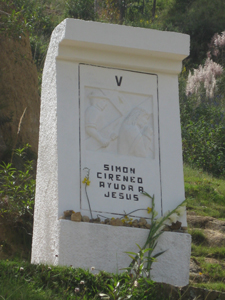
Other than the typical route where you pray and leave a rock at each shrine along the way, there are two other ways up the hill. You can ride a taxi up the winding path, speeding by each of the shrines, or hike directly up the hill, bypassing all of the stations. The latter is the fastest route up, but it’s also the more torturous path because of the steep incline of the hike. As an afterthought, it could be an experiential way to signify Jesus’ suffering during the Passion.
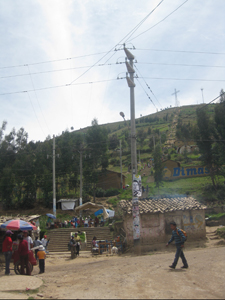
In undertaking this mini pilgrimage today, I realized that living in Peru has become somewhat of a pilgrimage for me in the sense that I was drawn to a place that was meaningful to me and the journey has been transformational, endowing me with insights and understanding. Although I haven’t taken the typical route and I sometimes feel like I’ve chosen the tougher passage, I have also discovered more and more people along this path who have motivated me and helped remind me of the value of my choices. In the blogging world, I would especially like to thank Janet Callaway, Sherry Zander, Rowena Bolo, Karen Swaffield and Diana Simon.
They say that when you return home from a pilgrimage, nothing is ever the same again.
What has your personal pilgrimage been like?
I had the privilege of spending these past two weeks in San Pedro de Atacama, Chile, assisting at a conference that endeavored to apply research to education. The Latin American School for Education, Cognitive and Neural Sciences brought together not only recognized authorities from around the world, but also an international group of PhD candidates and new professors. They gathered in the small town of San Pedro (population: approximately 5,000) in the middle of the Atacama Desert.
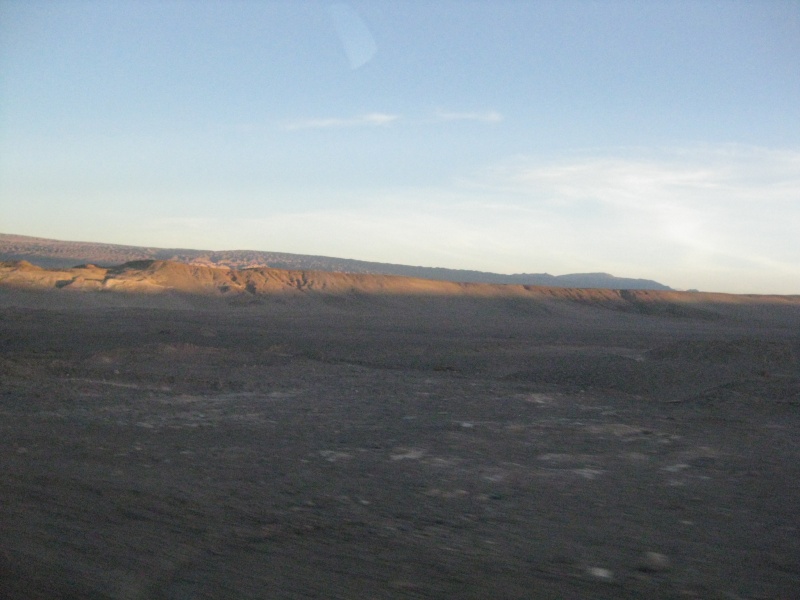
There’s something about being in the middle of nowhere that amplifies similarities and fosters connections. We were all affected by dry skin and an unreliable Internet connection, awed by the expansiveness of the desert and the actual number of potentially visible stars in the night sky (San Pedro is one of the best places in the world to stargaze), and afflicted by the earthquake in Japan. For the purposes of the conference, the aura of fellowship encouraged thoughtful discussion about applying the learning and intellectual sharing to the real world. The atmosphere generated ideas, cultivated future research collaborations and motivated each participant to pass on new knowledge to their respective areas.
It was a beautiful example of how the strength of similarities could overcome differences and the beauty lies in getting past stereotypes to experience a true willingness to learn from and through others. There was less identification with divisive labels, such as Costa Rican versus Uruguayan, student versus faculty and scientist versus educator. Instead, the conversation shifted from a comparison about what each person could or couldn’t do to a sense of teamwork with a focus on how people could work together to achieve more than one could on his or her own. We became humbled learners who recognized the essential humanity that bonds us together as part of the same global community.
Achieving openness can be facilitated by a purpose, such as the aim of the LA School, but I believe that this phenomenon can actually happen anywhere. It just requires that you step outside of your comfort zone, outside of the categories that your mind has already formed. The surprises you’ll find can diminish fears, break barriers and, most importantly, construct a sense of connectedness that has the power to lead to positive changes.
Have you been surprised by similarities you share with another? How have you seen or experienced the power of connectedness?
P.S. I made it back home to Huancayo safely and am slowly settling back into the groove of things. Thanks for your patience!
We’ve officially had three full days of courses with the Coady Diploma Participants and two weeks more to come. I have to admit that I was ready to write-off the whole course after the first day of classes – some of the participants didn’t vibe with the participatory teaching style (i.e. a lot of small group discussions and energizers) – there was a lot of interrupting, and there also seemed to be a language barrier. That all started to change, though, as we all became more comfortable with each other and began discussing issues more relevant to the participants’ backgrounds and interests in community development.
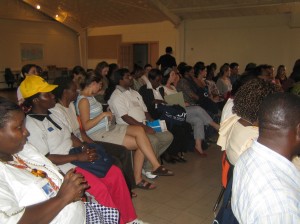
It’s like how Berin was telling us about the forest communities in Nepal. NGOs thought they were “helping” these communities, by transferring them to the city, until they found the people back in the forest some time later. Fred made the argument that sometimes people don’t know what they need, at which time the donor may be justified in intervening. He had worked in Somalia during a large famine and the people felt that they needed food, of course. But just giving away food wasn’t sustainable, so the Food for Work program was implemented – food was given in exchange for human capital so that canals were built to harness water and roads were built for better access to rural areas. Imagine me nodding my head at this time, vibing with Fred’s wisdom, until Olga brought us back to the idea of giving these people a sense of ownership. The way the Food for Work program was employed perpetuated paternalism and dependency. A better approach would be to increase the people’s awareness of other possibilities and educate them so that they discover for themselves what they really need and what can be done.
Before I left for Antigonish, Dana and Mary (coordinators of BC’s infant development program) talked a lot about empowering the mothers that I’ll be working with in Peru. I’ve learned from Crystal that a better term might be “capacity building” or “capacity strengthening” which acknowledges that these moms already have the capacity to be excellent mothers, whereas “empowering” implies that these moms are empty and need to be instilled with the power or capacity to be. I like to also remind myself that I am exactly where I need to be right now, doing exactly what I need to do, and that I have just what I need to do these things…to absorb all this knowledge, to learn Spanish (almost from scratch), to get up every day and go for a run, to manage my time well (despite a string of 8am-8pm days with extra Tara sessions), to just be really human.
Ohmigoodness! Thank you so very much for posting comments, guys! It totally makes me feel all warm and fuzzy inside (i.e. I really feel the support).
Today we began a two-day workshop with a facilitator from the Canadian government’s Centre for Intercultural Learning (CIL). All internships funded by the Canadian International Development Agency (CIDA) have this two-day preparatory workshop, but most only have these two days before being sent off to their host countries so I’m glad we have an entire month to get in the groove. I’m so happy to have these opportunities to discuss cross-cultural issues, especially because I feel a little bit like the underdog without a background in international development. It’s especially exciting to engage in discussions with the other interns because they’re so well-traveled, well-read, and have well-developed opinions but are still very open-minded.
We played a card game in the beginning that really initiated a lot of discussion. First, we sat in three groups and each group got a set of instructions to the card game – unbeknownst to us, each of three groups received a different set of instructions. During the game, we weren’t allowed to talk to each other and the trouble started when we had to rotate players. Without communication, the “new” member of each group had to figure out that there were different rules at their new table. It was supposed to be a microcosm of dealing with intercultural issues and it was interesting to see the different approaches people had. Some were laid back and just went with the flow even though they were confused that the rules were suddenly different and some tried to implement the rules of their original table even though everyone else at the new table were playing by a different set of rules.
I remember that at my table, one of the girls was trying to show us her way of playing the game even though the rest of the members of the table were playing by a different set of rules. I had the urge to take over and explicitly show her the rules of the table, but another guy at the table took a different approach before I could act. He has a really laid back personality and compromised by splitting up his “winning” cards between himself and the other girl to appease her. It was such a simple act that I hadn’t even thought of. I guess, sometimes, the best thing to do is to take it easy. There isn’t only one right way to do things and we certainly can’t be going to Peru with even the slightest attitude of superiority, assuming that our methods are somehow better than their existing way of living. No matter how many times I am reminded of this, I seem to continually catch myself in moments when I am subconsciously trying to enforce my beliefs, opinions, or ways of behaving. It helps that I am continually humbled by the other interns in this group.
I was talking to my sister yesterday night and realized that the tension and anxiety I’ve been feeling (and probably the reason that I’ve been having a hard time sleeping) is because this whole experience is really outside my comfort zone. Engaging in discussion on issues I’m really not familiar with, trying to delve deep into my limited life experience to produce relevant and insightful comments (this rarely happens). Being a “group member” almost 24/7 as we are always in a group during class, meals, and all the activities the interns organize afterwards whether they’re playing soccer, going for walks, chatting in the common room, or having Spanish conversation sessions.
But she also helped me realize that “the only person being hard on me is me.” All of the interns are inclusive, supportive, encouraging, understanding, and just downright nice. I guess I will only grow and change by stepping outside of my comfort zone in these ways.
It is a challenge every day, but that doesn’t mean I can’t and won’t be able to wake up every day and face that challenge. I always find running to be a good microcosm of life for me. Whenever I head out for a run in the morning, there are so many excuses running through my head, so many reasons I could conjure up to justify going back inside (it’s raining, there’s a stone in my shoe, a blister’s developing, I already ran yesterday). And while I’m running, I’m fighting the whole way to not stop before the length of time that I’ve set for myself. And the majority of the time, I get through it, and sometimes I’m even able to push myself further and run faster for a couple intervals. It seems that I have to have more faith in myself when it comes to daily life as well.
Copyright © 2024 Samantha Bangayan | Sitemap | Disclosure Policy | Comment & Privacy Policy
All articles and photos in this blog are licensed under the Creative Commons Attribution License CC BY-NC-ND 3.0.

